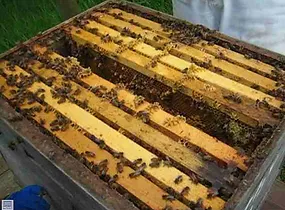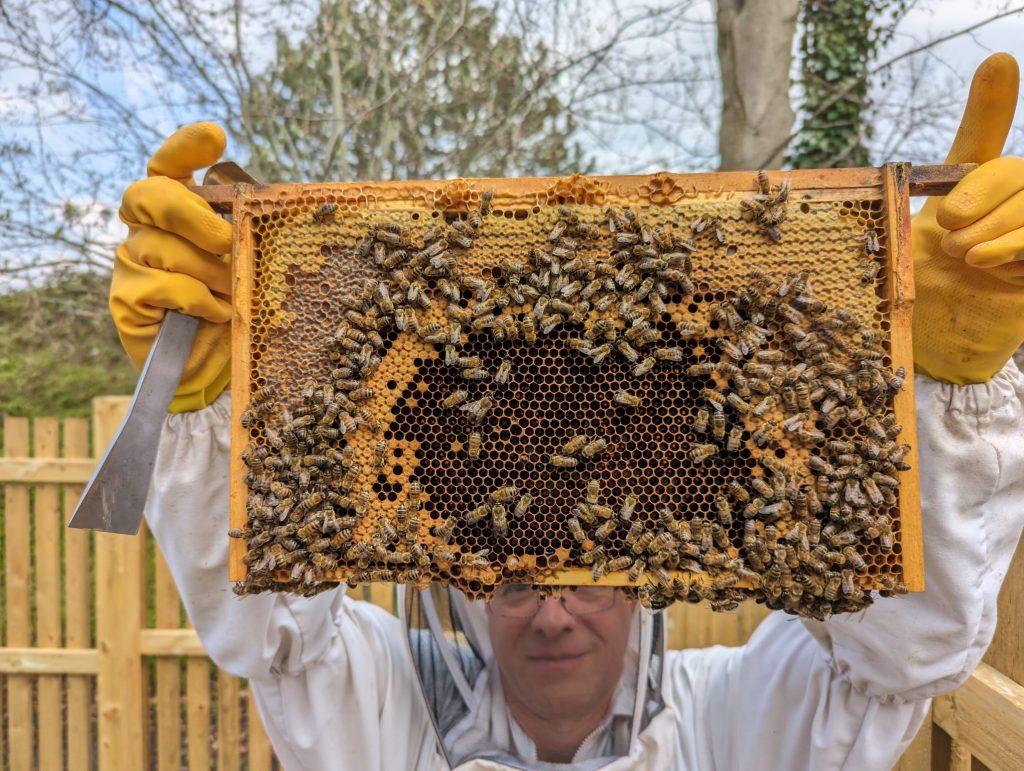
Brood Box & Frames
A colony consists of one Queen, many thousands of female worker bees and, in summer, a few hundred males called drone bees.
The beekeeper keeps the Queen in a part of the hive called the Brood Box. It is here where the eggs are laid and the young bees are raised. The picture is looking down on an open brood box.
The box contains a series of removal frames which the bees use to build brood comb (bees wax honeycomb). The beekeeper places “foundation” in the frame to encourage the bees to do this. It means that the frames can be easily removed and the state of the brood and state of the colony viewed and assessed (see picture below).

Brood Frame
“Reading” brood comb is a key beekeeper skill, the brood comb provides valuable information about the health and status of the honeybee colony. The picture shows a typical pattern – with capped honey in an arc across the top, below that is some stored pollen, and then capped brood. The central area of the comb is where the queen lays eggs, and young larvae are raised. In the picture the central brood areas is empty as the brood has hatched.
A beekeeper observes the pattern of capped brood (sealed cells containing pupating bees) and assesses whether it is uniform and healthy. A spotty or irregular brood pattern could indicate issues such as a queen problem, disease, or environmental stress. This is where training is beneficial.
The brood comb can also give the beekeeper an idea of the current population size of the hive. A healthy hive will have an appropriate balance of worker bees, drones, and brood.
In the picture below the Queen is in the centre marked with a white dot to make it easier to find her. Around the Queen are a number of attendant bees giving her food and generally looking after her. In the hexagonal honeycomb cells beneath the bees you can see the white young larvae, surrounded with white brood food given to them by the nurse bees. The Queen spends her days from March to October looking for empty honey comb cells and laying eggs in them. In mid summer she could be laying 2000 eggs a day.

Queen with brood and worker bees
More information on honey bee biology and behaviour can be found here: BBKA

